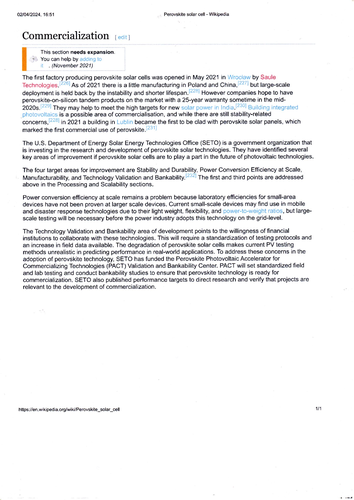



Solar power is now the cheapest source of electricity in history.
Solar’s success has come from the plummeting cost of making the panels.
The next task is to improve the efficiency of the solar cells.
Henry Snaith, a physics and serial winner of scientific awards, and the company he has founded, are dedicated to improving the efficiency of the solar cells. His idea is to combine silicon with another material that can harness energy from the blue end of the spectrum so you get more clean , green electricity from each panel.
Perovskite is a natural occurring mineral - calcium titanium oxide.
It is a semiconductor, with a crystalline chemical structure, which can be made in the lab with much less energy than required to make panel grade silicon.
The perovskite silicon sandwich has already achieved 29% efficiency, the theoretical maximum is 45%.
Snaith is aware that making perovskite panels stable is critical. Durability also need to be proved.
It can be made in very thin layers and used on flexible materials or even glass that still lets through the light.
Solar energy is already projected to grow 14 fold and should deliver a 12% cut in our total carbon emissions using existing silicon cells by 2050. With perovskite it could rise to 18% or higher with greater efficiency.
The future is bright
Sources
Wikipedia
39 Ways to save the Planet by Tom Heap
Something went wrong, please try again later.
This resource hasn't been reviewed yet
To ensure quality for our reviews, only customers who have downloaded this resource can review it
Report this resourceto let us know if it violates our terms and conditions.
Our customer service team will review your report and will be in touch.